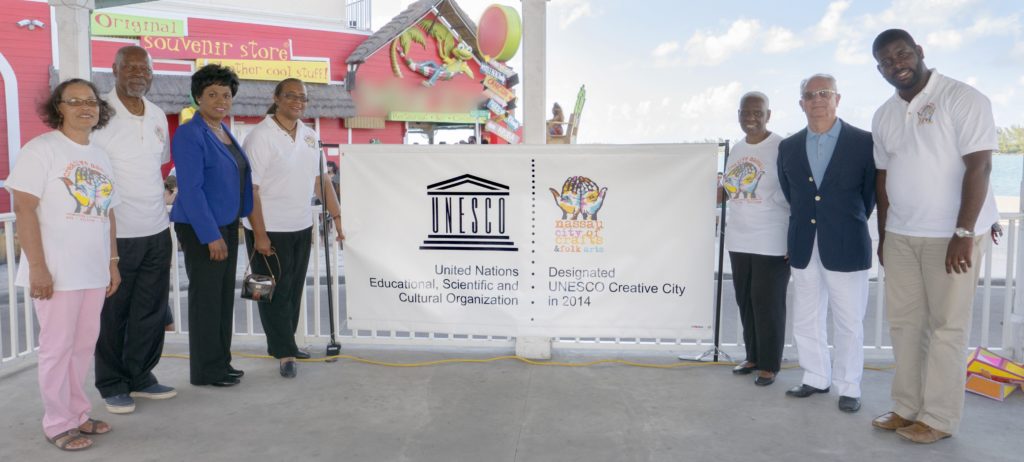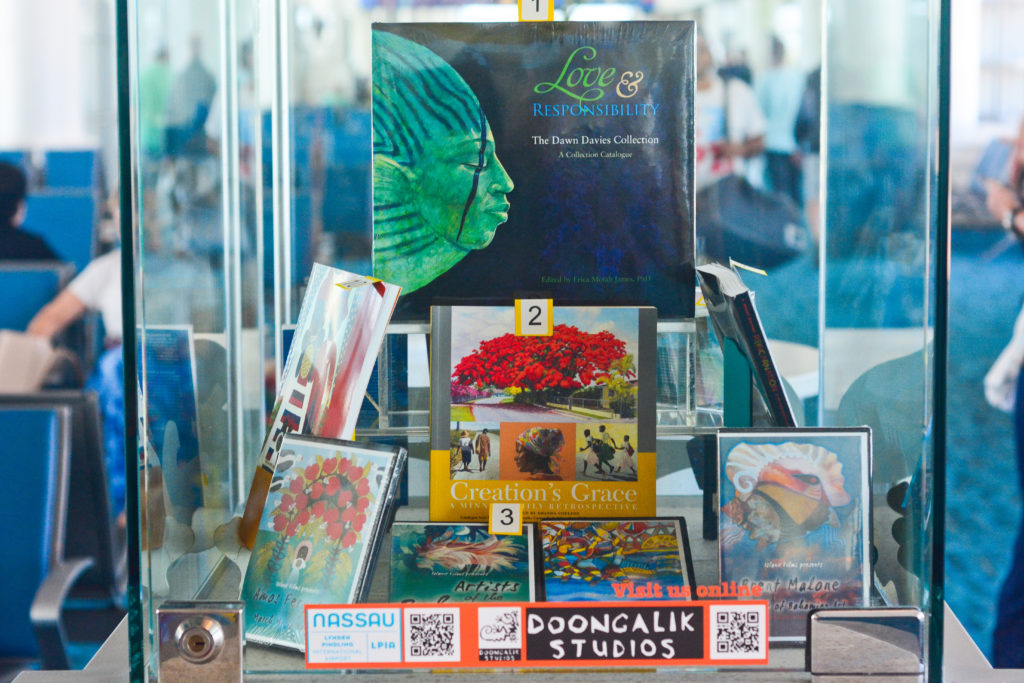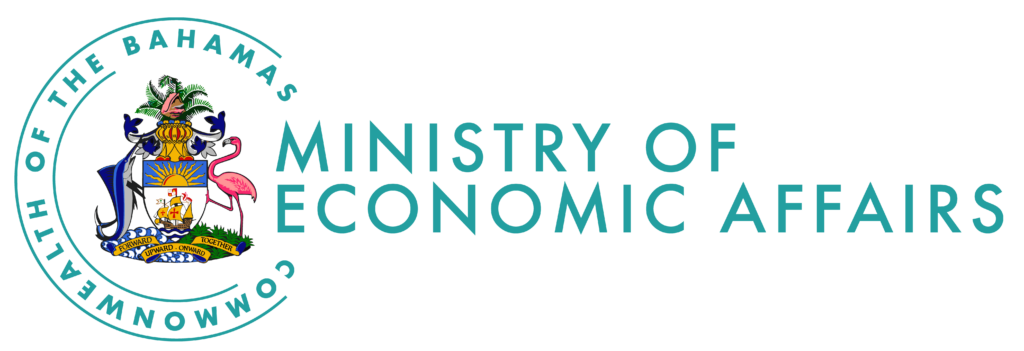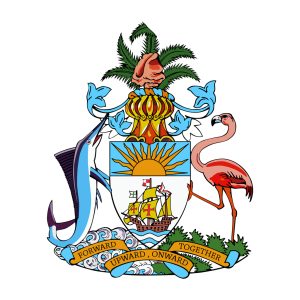Creative Sector Leader and Advocate For ‘True True’ Bahamian Culture
Doongalik Studios (www.doongalik.com), the brainchild of Pamela Burnside and her late husband, Bahamian cultural icon, Jackson Burnside III, is a permanent fixture in the Bahamian arts and culture scene. Located on Village Rd., Doongalik’s Junkanoo-inspired aesthetic greets all visitors seeking to celebrate and promote Bahamian art and culture.
Pamela is very proud of the work that Doongalik Studios has done in the local art and culture scene since she co-founded the studio in the late 1970s. She fully embraces her role as a long-time contributor to the local arts and cultural scene.
“I consider myself to be a ‘true true’ Bahamian cultural advocate,” she says. “My husband and I returned to a newly independent Bahamas after completing our studies abroad – he in architecture and art and me in fashion design – motivated and determined to promote and celebrate the genius of Bahamian creativity and make it known to the world. We established Doongalik Studios in the late 1970s as an art gallery and creative centre for this very purpose, which has been our objective for almost five decades.”
Doongalik is home to two non-profits: Transforming Spaces, known for its annual art tour to expose the public to Bahamian fine art, and Creative Nassau – an organization borne out of a desire to celebrate and promote Bahamian art, culture, and heritage “from the inside out.”
“In 2008, we established Creative Nassau with a group of similarly passionate creative Bahamians, and took the bold initiative as private citizens to apply to the prestigious UNESCO Creative Cities Network (UCCN) for the city of Nassau to become a member. “
“The UCCN designation was achieved in December 2014, three years after Jackson’s passing, with the city of Nassau becoming one of the first of two cities in this region to gain membership as a UNESCO Creative City of Crafts and Folk Art, based on our rich Bahamian straw heritage and our Junkanoo traditions.”

UNESCO Logo Unveiling: Pamela Burnside is pictured on the far left.
Thinking back on her journey as a creative entrepreneur, Pamela remembers the excitement she and other young Bahamians felt immediately following independence as many artists returned home to gain a foothold in an emerging, homegrown creative sector.
“We became immersed in a new and flourishing community of creatives in the fields of fine art, music, literature, dance and drama with names like Clement Bethel, Kayla Lockhart Edwards, Brent Malone, Tony McKay, Jeanne Thompson, Amos Ferguson, Helen Astarita, Pandora Gomez, Shirley Hall-Bass, ‘Sir’ Charles Carey, Telcine Turner-Rolle, Charles Carter, Ronnie Armbrister at the forefront, along with many others – most of whom have now passed on. It was certainly an exciting time full of memorable moments.”
She believes that with independence came a new attitude reflective of the “new Bahamian” who traded in manual labour in exchange for the pursuit of “business suits and briefcases.” With this change came a move towards modern mass tourism, leading to a migration of many local artists away from the locally owned nightclubs and other Bahamian owned venues to be taxi drivers, bus boys, maids, and waitresses at the large hotels, which replaced live bands with DJs, losing major elements of cultural heritage along the way.
“Bahamians are naturally creative – we have been blessed with this amazing ability to imagine and produce with great embellishment and flourish in so many ways, and we take this ability for granted because it comes so easily to us. Why are we not using this ability to our fullest advantage, like our forefathers did?”

Airport Display of Bahamian art
Pamela believes that there is a growing disconnect between public sector priorities and the needs of the creative sector. She says that much more can be done to bolster authentic Bahamian artistic and cultural experiences.
“Government has a significant role to play in ensuring culture’s stability by recognizing, respecting, facilitating, and financing its growth. Many of us within the creative sector believe that not enough of this is happening. It is up to the creative community to shine a bright spotlight on these important issues because the ‘powers that be’ often remain unaware of creativity’s potential, value (psychologically, socially, and economically) and power. “
She believes that the Orange Economy can play a major role in reconfiguring the economic engine of The Bahamas and passionately vows to continue to fight for local creatives to get the respect and opportunities that they deserve, even when progress is slow to come by.
“Even though the road traveled is both rough and rocky, it can also be smooth and sweet. Our experience on this ‘same story, different day’ path, along with our limited resources, both human and financial, has taught us to pick our battles wisely, and to exercise time and patience as we move towards our objectives.”
Pamela believes that a number of key reforms are needed in order to unlock the potential of the local creative sector. Some of her suggested reforms include needed changes to local banking and payment options to empower small and medium sized enterprises. She highlighted the need for increased support in buying Bahamian-made goods and the achievement of economic diversification through further encouragement and increased access to international and domestic markets. She also noted that the difficulties faced by creative businesses are the same as those faced by all manufacturing businesses in The Bahamas.
“Our labour costs, supplies, raw materials, import duties and such are extremely high. Our lack of capacity related to the mass production process, technology and machinery, high shipping costs, as well as subpar worker productivity, greatly affect our ability to be competitive on an international level. This is a basic premise that must first be examined in detail before we, as a country, consider greater involvement in international trade.”
Her advice for aspiring artists and creatives is reflected within an ancient African analogy representing past, present, and future:
“The African Adinkra ‘Sankofa’ symbol depicts a bird with its head looking backwards and an egg in its mouth as it flies forward. It encompasses the importance of acknowledging one’s history and heritage – living in the present but paying homage to the past in order to engage the future. Each generation is tasked to progress by standing on the shoulders of their forebears.”
Pamela encourages interested readers to reach out to her with any questions or thoughts at her email address: pam.burnside@doongalik.com.

